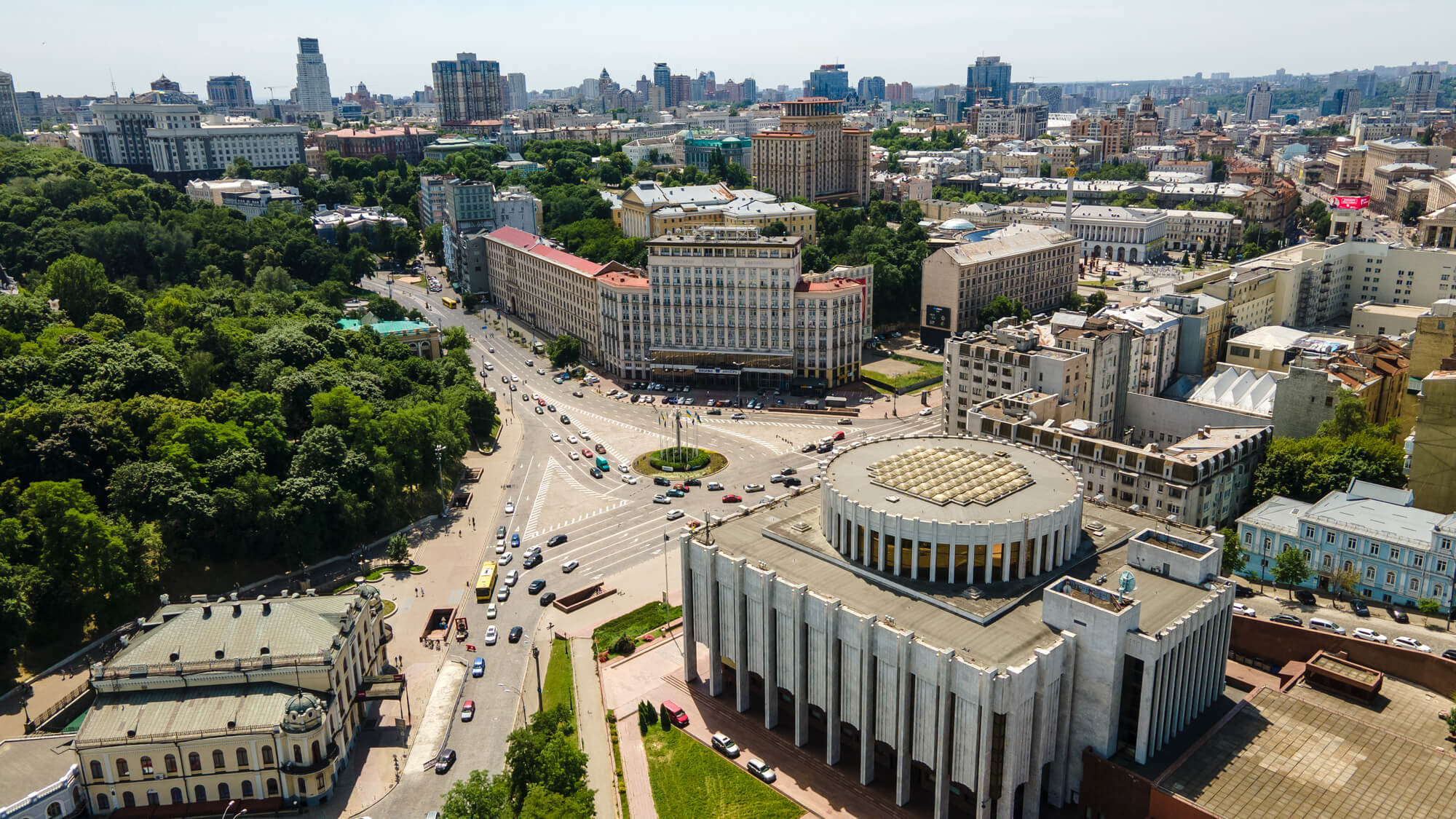A month ago in Minsk, the Trilateral contact group (Ukrainian, Russian and OSCE representatives) signed a ceasefire protocol to restore peace in the eastern regions of Ukraine. In the first 24 hours after the agreement was signed, hope for peace was demolished by the renewed fighting near Mariupol: pro-Russian belligerents equipped with Grad rockets fired 16 times at Ukrainian positions allegedly from the Russian territory. Subsequently, Ukrainian forces in Mariupol were reinforced with additional troops.
These events triggered a huge media storm and a widespread critique of the peace negotiations and Minsk Protocol as nonsensical, ineffective and useless strategies. Hence, Ukraine’s complex position was significantly weakened.
The negotiations in Minsk (attended by former Ukrainian President Leonid Kuchma, prime minister of the self-proclaimed Donetsk People’s Republic (DPR) Aleksandr Zakharchenko, head of the self-proclaimed Lugansk People’s Republic (LPR) Igor Plotnitsky, Russian ambassador to Ukraine Mikhail Zurabov, and OSCE representative Heidi Tagliavini) progressed on September 19th. The initial Minsk Protocol was detailed by another set of agreed provisions laid out in the Memorandum on the Protocol’s enforcement. These documents must also be read in light of two other legislative acts: Bill on special procedures of self-governance in certain areas of Donetsk and Luhansk regions of Ukraine (5081) (known as the “Law on special status”) and Bill on the prevention of the prosecution and punishment of persons who participated in events in Donetsk and Luhansk regions (5082) (also known as the “Amnesty law”). Serhiy Taruta, the governor of Donetsk Oblast, has recently published his critical and well-structured analysis of the truce. This post aims to evaluate the effectiveness of the abovementioned agreement and legislation (Minsk Protocol, Memorandum and two supplementing Bills) with regard to the existing practices of managing conflict and post-conflict negotiations, including drafting of cease-fire agreements. Thus, we shift the focus from discussing issues in the Minsk Protocol to factors omitted by drafters and negotiators and the significance of such omissions.
1. Parties of negotiations
Prior to scanning the text and evaluating its efficiency, it is important to define the roles of the parties engaged in the peace negotiations. Ukrainian and Russian media present information very differently. In Ukraine, the Minsk meetings are depicted as a step in the enforcement of President Poroshenko’s Peace Plan aimed at putting an end to international conflict with the neighboring state. Russian media focus on the fact that their leader is continuing his work as a fair referee by urging the peace talk between Ukraine and the bellicose, yet, sympathetic rebels. However, the situation is rarely described as it is: Ukraine is still the only entity that is bound by the negotiation’s resolutions.
Russia maintains its official position of strong denial of direct involvement in the ongoing conflict and, thus, that the country has a role of an intermediary in negotiations between the Ukrainian government and the belligerents in Donetsk and Luhansk. So far the only obligation that is clearly undertaken by the Russian side is assistance in creating safety zones in bordering territories (clause 4 of the Minsk Protocol). The international community is slow in expressing its official position on Russia’s account, e.g. PACE recognized the presence of Russian militia in Ukraine only very recently. Hence, in terms of diplomacy, Russia is free to pick any desired roles and picks the neutral one. LPR and DPR leaders are actually not bound by any law whatsoever: as non-state actors they are not bound by rules on international public law, and it is practically impossible to enforce Ukrainian criminal law on them.
Governor Taruta accurately noted that it is crucial to set the enforcement mechanism for the Protocol within the emerging legal framework, which may take the form of an arbitration agreement. He suggests that OSCE special mission and representatives of Geneva process should share the role of an arbiter. This elicits a question on the effect of third parties’ (i.e. international community representatives) involvement on peacekeeping. Virginia Page Fortuna argues that the influence of these entities depends on the level of involvement exercised by their “external” peacekeeping missions. The presence of foreign monitors (80 members of OSCE special monitoring mission (SMM) in this particular case) is likely to lengthen the duration of peace, but when it comes to dispute resolution, joint commissions made up of representatives from both sides of the conflict are more likely to succeed, rather than a third-party mediator. At a first glance, creation of such joint commission in Ukrainian-Russian context sounds controversial. However, if this option is implemented, Russia will be forced to clarify its status in the conflict: not being a conflicting party (but a mere mediator) would hinder Russia from participating in a joint commission and reduce its impact on the arbitrating body.
2. Nature and duration of the agreement
Media went hysterical observing the fights in Mariupol and the Donetsk airport suggesting that the agreement is doomed, the primary clause is breached, nobody has laid their arms and parties are fighting as they were. However, practically every other manual on drafting cease-fire agreements warns prospective drafters that the “period immediately following a ceasefire will almost certainly witness continued acts of violence and intimidation.” But why do we need a cease-fire agreement if fire would not be ceased? In light of upcoming elections, all parties in the trilateral negotiation process have strong interests in a break since they need time to shift their forces from the battlefield to the political arena. But more importantly, this agreement is not a tool for conflict resolution, but rather an instrument for conflict management. None of the parties at this stage of negotiations is likely to satisfy its own interests fully or in part, but it is possible to undertake necessary steps to reduce the suffering of civilians living in the respective territories. OSCE Secretary General managed to express all these insights in one short phrase:
So we want really to invest as much as we can in stabilizing the ceasefire and deescalating the crisis and developing this political space that we found through agreements in Minsk because this is now the beginning of the solution to the problem.
– OSCE Secretary General Lamberto Zannier
Therefore, it is important to judge the Minsk Protocol and Memorandum based on the ability of these pacts to contribute to conflict stabilization.
Hostilities are likely to deescalate if parties reach a strong and durable peace agreement. The practice of conflict negotiation demonstrates that agreements with an appropriate level of detail and confidence-building measures aimed at minimizing negative impacts of the asymmetry between the negotiating parties have a higher chance to be adhered. While the text of the Minsk Protocol is far from perfect and its 12 clauses hardly provide any details, some provisions had immediate effects: on September 8th, DPR Prime Minister Alexander Zakharchenko announced that 28 servicemen had been handed over the previous Sunday in the process of POW exchange; as of September 10th, 70% of Russian troops were reported to have been moved back across the border. The September 19th Memorandum sheds some light on ceasefire conditions, including details on the stretch, location and timeframe of buffer zone, non-fly zone and demilitarized zone, and represents a promise for further clarifications. However, it took the parties almost a month of spontaneous and sporadic fighting to set clear terms for the ceasefire clauses. Such approach could hardly be labeled as effective, especially taking into account the patchy manner of selecting regulated issues (while demilitarization requirements are laid out in details, humanitarian obligations are not covered at all).
3. Omitted bedrock elements of the ceasefire
The best recent practices of ceasefire negotiations demonstrate that ceasefire agreements predominantly comprise of four major blocks: 1) measures aiming at de-escalation of the conflict, 2) definition of the agreement’s violation, 3) monitoring and dispute settlement mechanisms, and 4) geographic coverage and timeframe. Moreover, in cases where the agreement takes more of a “managing” (rather than “resolving”) character, it is important to enlist specific concerns for civilian protection, including return of refugees and internally displaced persons, cooperation with humanitarian agencies, prisoner exchange, and freedom of movement. September 19th Memorandum reinforces the 12 sections of the Minsk protocol by providing details on the ceasefire line location, the stretch of buffer zone, the limits of 30 km non-fly zone and demilitarization requirements. However, it leaves uncovered the part concerning monitoring and dispute settlement. Despite clause 4 of the Minsk Protocol naming OSCE mission as the Ukrainian conflict monitor, and clause 8 of the Memorandum adding that the buffer zone should be divided in several sectors (namely, 5) for monitoring purposes, OSCE mandate remains incredibly narrow and still provides no effective mechanisms to enforce the Protocol’s provisions and enhance the parties’ adherence to human rights.
The logic of the agreement puts the whole burden of human rights monitoring on OSCE representatives, while remaining silent about any type of humanitarian action. Instead, such provisions can be found in between the lines in an act of domestic legislation, namely Article 7 of the “Law on special status.” This clause outlines that Ukrainian social and economic assistance in developing the two disputed regions should be implemented through a special law aiming at restoring the regions’ infrastructure, social and economic capacity. Thus, the provisions are still highly vague and postpone setting details on the set of actions aimed at restoring Donetsk and Luhansk and each Party’s scope of responsibilities until the State special-purpose program on region’s development (also referred to as “the program of Donbas’ economic revival and restoration of the region’s vital activity”) is drafted. Furthermore, there is no suggestion that any enforcement mechanism may be used in case the DPR/LPR authorities fail to implement this program in situ.
4. Broadening the belligerent’s political capacity
The Minsk Protocol names decentralization of the Donbas region as one of its central clauses, while specifying the Kiev authorities’ obligation to adopt the “Law on special status.” Decentralization was also one of the EuroMaidan’s main demands. However, this case has different hidden agenda. Decentralization, providing reasonable equal broadening the political, economic, and social capacity in all Ukrainian administrative units, is truly crucial. The mode, which is to be implemented in DPR/LPR, endorses overly broad exclusive credentials for two districts only.
Under this law, Ukrainian authorities undertake to ensure early local elections (December 7), bring to focus the ambiguous language issue, but more importantly, broaden regional capacity to independently enter into agreements with Ukrainian local administrations on matters related to economic, social and cultural development, as well as trans-border agreements with Russian local administration units. Moreover, court members and prosecutors are to be appointed by a special order given by the respective local government, while territories may also additionally establish their own militias not subordinated to Kiev.
Simultaneously, there is a strong demand from the separatists’ side for an amnesty law. On September 17th, the Ukrainian legislature introduced a sweeping amnesty law, which would probably only exclude the participants of grave crimes such as the downing of Malaysia Airlines Flight 17. Taking this fact with the abovementioned broadening of local governments’ capacity, it becomes quite clear that without the implementation of proper monitoring, the purpose of December elections would be undermined: separatist leaders would regain extensive power without being held responsible for past abuses.
5. Conclusion
An old proverb says a bad peace is better than a good war, which is proven by scientists not exactly to hold true: weak peace agreements may re-launch even more intense hostilities. The Minsk Protocol and related legislations can be useful, but require more details and a profound humanitarian insight, as well as an effective enforcement mechanism including a set of mutual guarantees binding upon the parties (not merely declarative). It is important to either broaden the mandate of the current monitoring mission or form an alternative commission with extensive powers in dispute resolution. The Ukrainian side should also get inventive with pressing Russian representatives to take a clear stance on their role in peace negotiations, which in turn could lead the upcoming international hearings to be more effective.
Attention
The author doesn`t work for, consult to, own shares in or receive funding from any company or organization that would benefit from this article, and have no relevant affiliations



